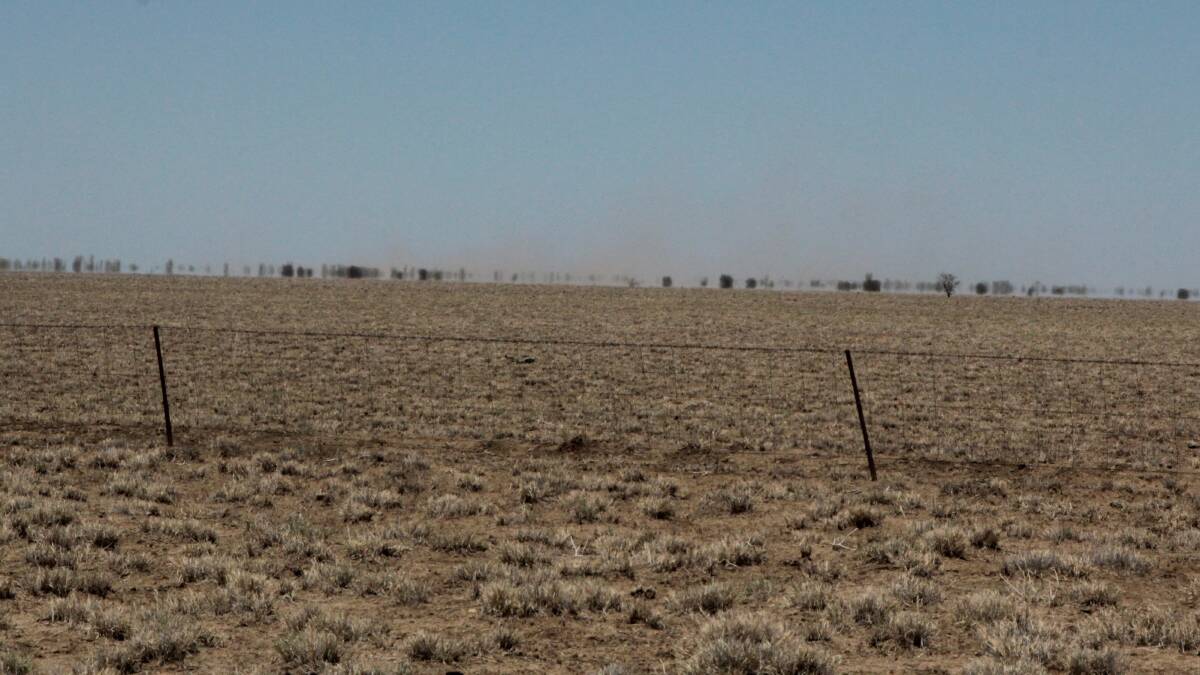
DRASTIC decisions have been made on cattle operations in the past few weeks where drought continues to strangle as producers head into the Christmas break.
Subscribe now for unlimited access to all our agricultural news
across the nation
or signup to continue reading
Entire cow herds have now been offloaded across parts of central and northern NSW and Queensland, while some producers are trucking stock big miles south to agistment.
For the most part, maintenance feeders who have not made substantial moves, such as setting up droughtlots, have reached the end of the line and offloaded.
The wash-up, according to experienced livestock advisors and veterinarians, is a permanent shift in risk management thinking.
The value of early weaning, early selling and confinement feeding have been well-demonstrated and documented during this drought, said NSW Department of Primary Industries beef development officer Todd Andrews.
"This has been reflected in the better ground cover, and much faster and better response to any rain that has fallen, for those producers who have adopted these practices," he said.
"Many producers feel the goalposts have moved, in terms of what they need to do to manage on-farm risk in the future.
"The potential for more severe and more frequent droughts means that water infrastructure, the amount of conserved fodder on hand, the ability to supplementary and/or confinement feed, and having well-planned selling strategies have taken on greater significance for producers, even as they manage their way through the current event."
Stockwork underway
The heat hasn't put much of a hold on stockwork in the drought-ravished regions, with plenty of early weaning and calf marking going on.
Across the NSW Central and Northern Tablelands, producers have been flat out trying to sort out what they'll keep before the close-down period, senior Local Land Services livestock officer Livestock at Mudgee Brett Littler said.
Producers were looking to pregnancy test as soon as possible to highlight cows to be culled - for some that would be happening Christmas week, he said.
The practice of holding cattle in purpose-built drought containment areas to feed intensively - a widespread drought strategy in sheep - had taken off in a significant manner across southern drought-affected beef production, advisors in these regions said.
"It's not new - 20 years ago the odd place was doing it as a drought mitigation measure - but we've seen far larger adoption and over a much wider area in the past two years," Mr Littler said.
The advantages lay in protecting ground cover, particularly perennial pasture species, but also the ability to provide the diet stock need, he said.
Research suggests cattle in confinement feeding programs have up to 8 per cent lower energy requirements.
Geoff Minchin, Riverina LLS, said there were now between 200 and 300 droughtlots on the ground in southern NSW, with 10 to 15pc cattle.
"We started promoting the practice in 2006 in both sheep and cattle and this dry period there has been an explosion in uptake in cattle, a reflection of extension programs and the excellent results producers have had," he said.
Planning laws require the containment area to be located outside an environmentally-sensitive area, and not within 100 metres of a natural watercourse or 500 metres of a residential zone or an adjoining dwelling. The provision is not intended for permanent structures. Droughtlots are also for maintenance rather than production feeding.
However, early-weaned calves in droughtlots need to be kept growing to avoid health issues, advisors said.
Mr Little said one of the big changes to emerge from this drought is that producers are now comfortable with weaning down to 100kg.
Typically it is easier and cheaper to feed a young calf and its mother separately, than it is to feed a lactating cow/calf unit. Early weaning is predominantly about maintaining the breeder's body score condition.
Pain relief
Uptake of pain relief is also growing as branding and weaning ramps up.
Veterinarians said the increasing interest in pain relief for procedures including castration, dehorning and branding was being driven by a combination of factors - production benefits, awareness of societal expectations around animal welfare and a desire to do whatever is possible to offset the stress of drought for animals.
Queensland cattle veterinarian Anita McNamara, Hughenden, said word was spreading about production benefits, as producers report calves were not going backwards after castration and dehorning where pain relief was used.
The expectation was come the first round of mustering in the north starting from February, pain relief uptake would continue to increase as had been the case now for a number of seasons, she said.
South Australian cattle vet Dr Elizabeth Pryor, Willunga, said about a quarter of cattle producers in her region were now using pain relief.
"This year people have been far more interested in talking about pain relief for routine cattle work, with more options available and so much in the media about welfare," she said.
Start the day with all the big news in agriculture! Click here to sign up to receive our daily Farmonline newsletter.


